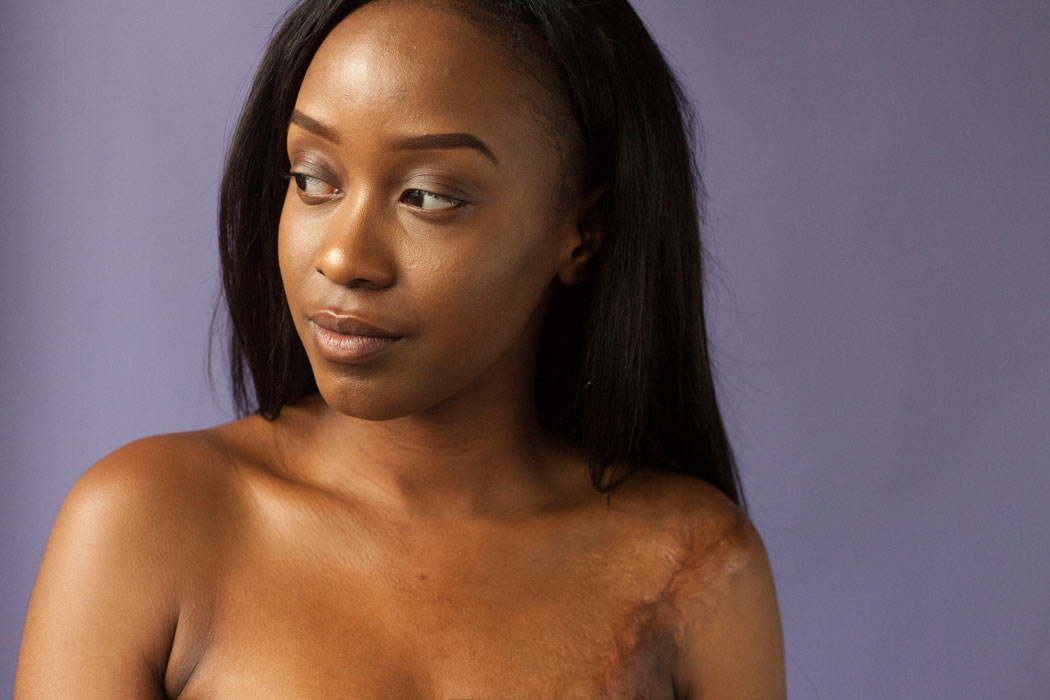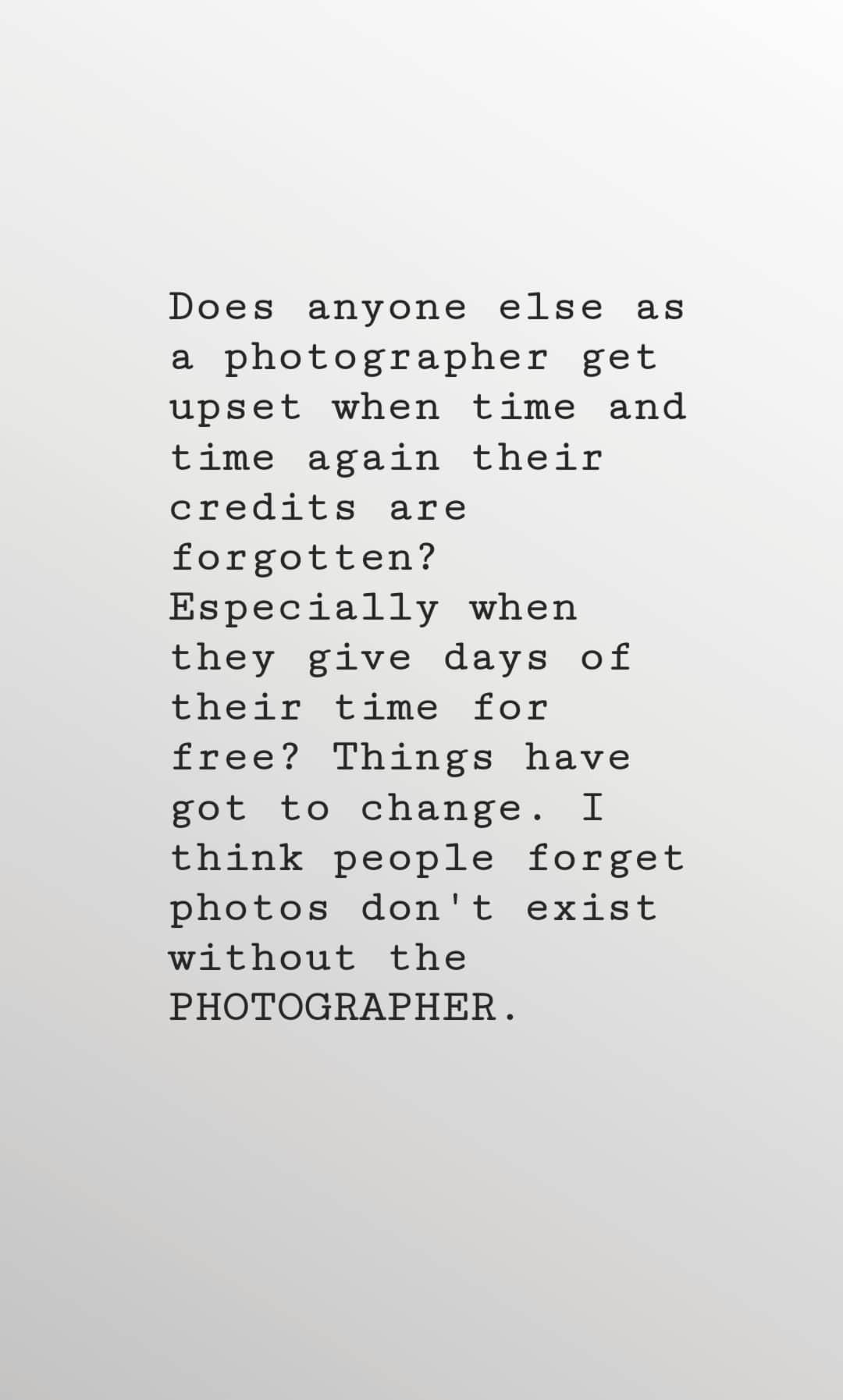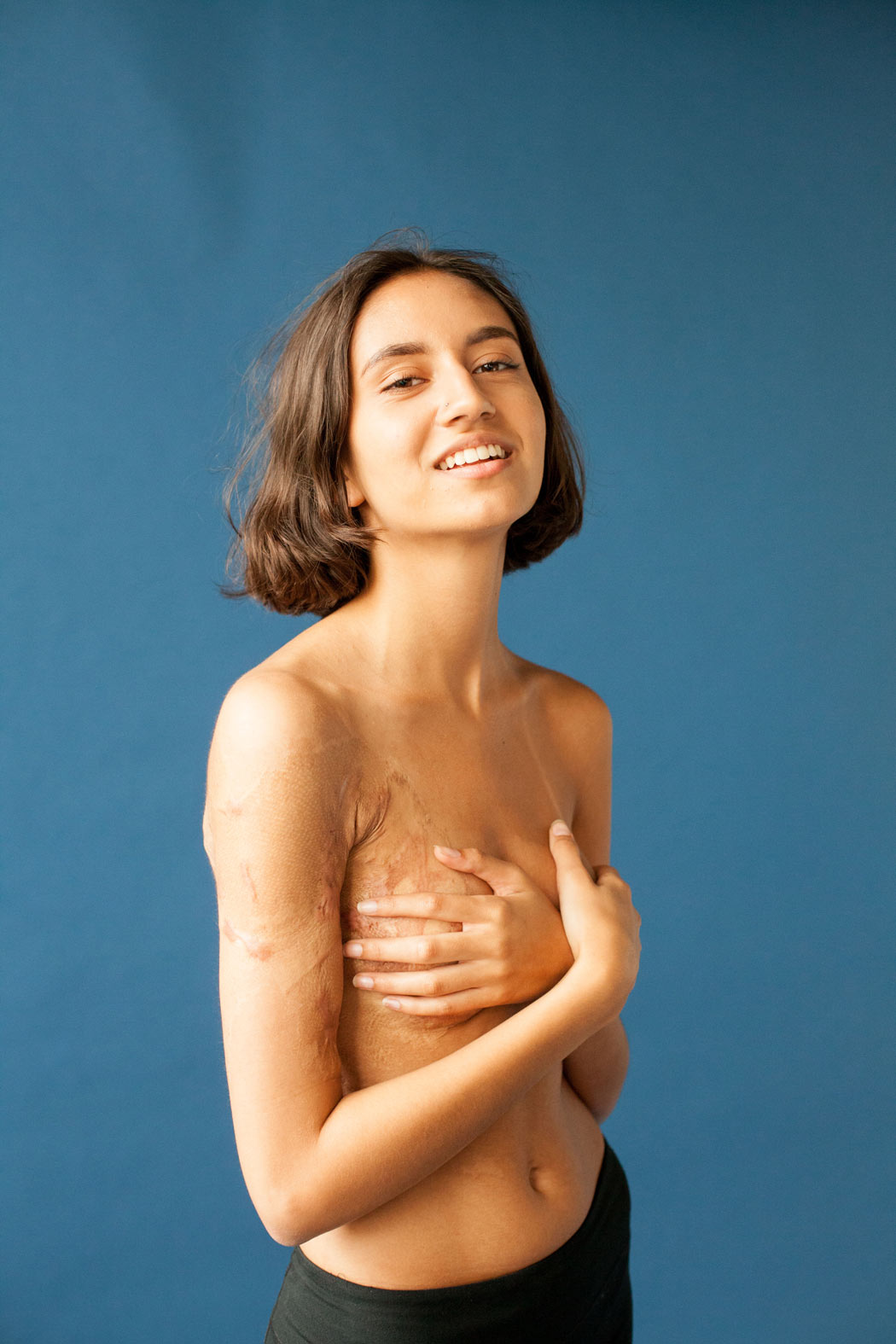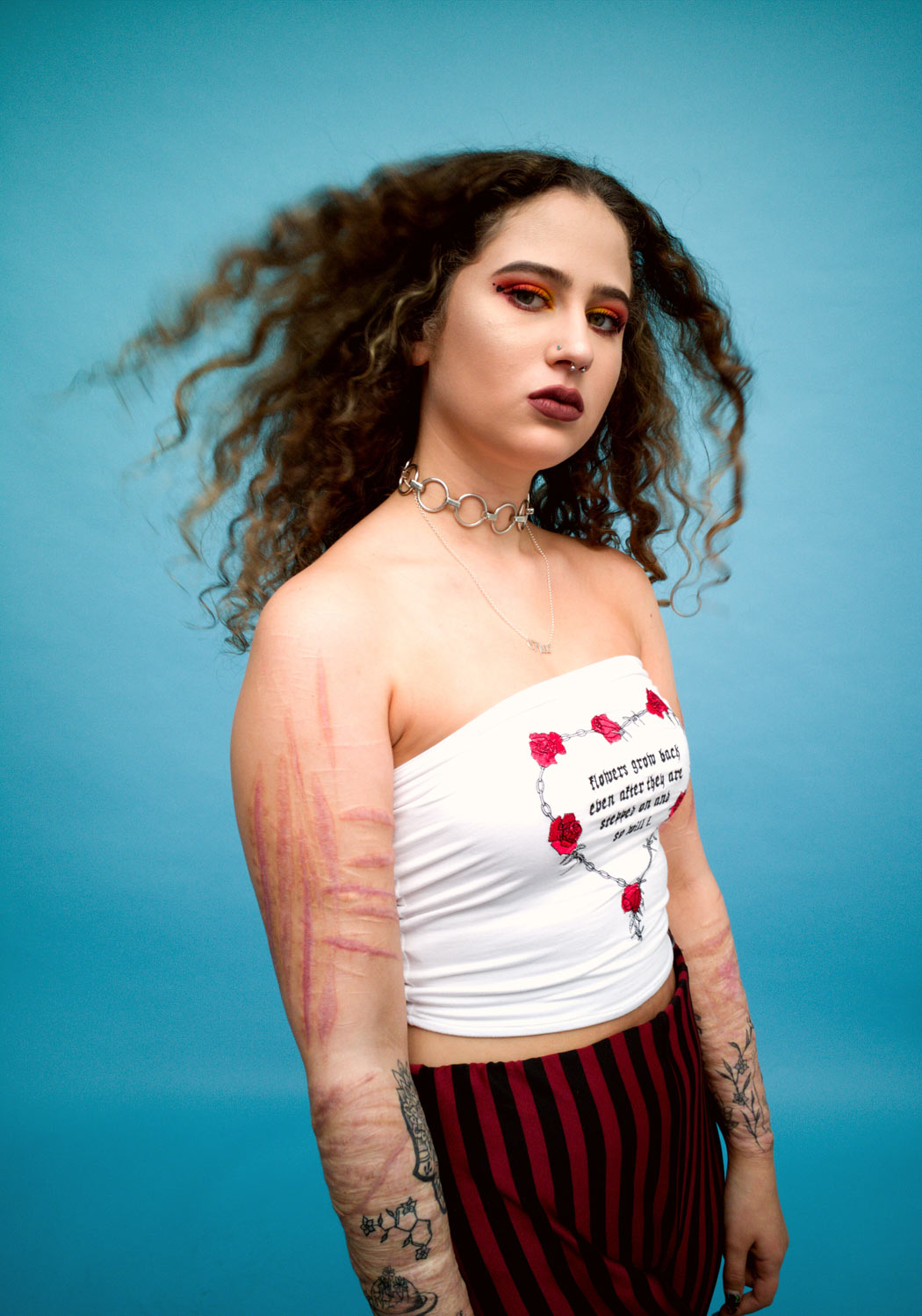In these days where an infinite number of pictures are randomly uploaded to the internet, unfortunately some of the understanding that the pictures have been taken by someone, and therefore also the necessity of crediting it, seems to disappear at times. The same goes for the understanding about the effort it takes to take a good photograph, involving the development of the idea beforehand and on many occasions the participation of a full team of model, stylists etc and the editing and selection process afterwards. Sophie Mayanne is a 24-year young fashion and portrait photographer who recently made big waves with her wonderful “Behind The Scars” project, also had to face the fact that her work has been shared without proper credits given. “Many people think that taking a photograph is simply clicking a button – it is a lot more than that, and artists emotionally invest in their work too.” she explains to us and continues to talk about the full consequences if an artist´s work is shared without care.
Sophie, in your Instagram post you criticize how some people always forget to give “credits”. Why did you decide to talk about this theme in public now?
I decided to speak publicly about the theme at this stage, after having a sequence of negative experiences related to TV and National Media Outlets in the UK this year. Yesterday my images were used, and not credited on a national TV program. I felt it was the duty of the producer, or organisers of the show to check these credits, and insure they are included. This was not the first time issues had occurred with the TV Channel concerned – previously they had contacted people that had sat for me, inviting them on to TV Shows to talk about my work. When I confronted them about this, they proved to be difficult when I said I would either need to be in attendance, or a proper background to my project, “Behind The Scars” would need to be given.
What did you learn from your experiences?
I’ve learnt that press, individuals, and clients quite often don’t understand the importance of correctly crediting an artist – and based off the responses I’ve received on social media, this isn’t an issue that just affects me – it is harming photographers, artists, graphic designers, freelancers, dancers, models and so forth on a daily basis.
Bintu from Sophie Mayanne´s recent series “Behind the Scars”
“When I was young, I pulled a cup of hot boiling tea off the counter. As a result, it burnt my left shoulder down tomy left breast and stomach. My scar has been with me since I was11 months old – itis all I know, I don’t even remember my body without a scar. I have my confident days where I say “It’s just a scar”. I’m sure everyone has a scar. I’ve definitely had my bad days, butonly when I meet a new face and they stare atitin disgust. It makes me think OMG is there something onmy body? And then I remember “the burn” lol. I wear this scar because itis a part ofme. It’s just a scar.”
I think that social media, tumblr and co has really changed the way we think about intellectual property. To what extent do these pages promote collective creativity, individual publicity, and is the damage more than the benefit?
The problem with the internet is it only takes one person to repost an image without credits – once that one image is posted uncredited, you can very quickly lose control of your work. You then end up investing a large amount of time trying to reign it back in – and keep some kind of control of the work that you have put your heart and soul in to. Sometimes the damage can very much be more than a benefit. Sometimes people will add credits after an article, or image is posted – however quite often this is too late – people who have already read the article aren’t likely to read it again, and the people who have already shared won’t be aware of who owns the content – thus their followers who repost won’t be aware, and so on. You can utilise things such as reverse google search to find the sources of photographic content – or if you are unsure of the source – sometimes it’s safer not to post it. If you love someone’s work – think a little bit before sharing – and remember to credit them.
“The problem with the internet is it only takes one person to repost an image without credits – once that one image is posted uncredited, you can very quickly lose control of your work.”
I think when people do not tag the photographer, makeup artist or the model in their reposted photo they usually think that it’s no big deal, as it’s “just a photo.” They miss the point that there are usually hours of work, sometimes many people involved and it’s their personal advertising opportunity. What would you like to change about the “scene”?
Sometimes there are days, if not weeks of work behind a photograph. There is a creative and visual concept created before hand. There is the shoot date itself, then there is the careful editing and selection process afterwards. This is the bit that is not often seen. Many people think that taking a photograph is simply clicking a button – it is a lot more than that, and artists emotionally invest in their work too. So when something goes out uncredited, it can quite often feel very personal. Quite often photographer’s – and many artists are expected to work for free to create content, and work – on the basis that they will be credited, and further paid work will follow. This doesn’t happen when the credits are forgotten at the original post. I’ve had many photographers reach out to me asking me how they can stop it happening – and many of them citing that they are scared there work will be stolen. I think education is key – I think making people aware of the work process, and so forth might make people stop and think. Stop and think how you’d feel if a photo of your child was taken and posted virally on the internet. Stop and think how you’d feel if your photo was posted virally around the internet, with no mention of who you are. For many artists, and photographer’s – our work is like our child. We are fiercely protective of it, we love it – and our heart and soul is invested in it.
“Isabella” from Sophie Mayanne´s recent series “Behind the Scars”
“In the summer of ’15 I was in a house fire. My clothes and way of life upin flames. I spent mysummer in a burns unit on Fulham Road. My scars and scar tissue continue to change, but I have never felt more beautiful.”
When should photographers not work for free? And if yes, what should they expect in exchange?
Whenever I waive my fee, I do it for a project I feel investing my time in will be beneficial. Usually this is on a credit basis. People should never be doing commercial work for free, as it devalues the whole industry. When you are just starting out, it is beneficial to test and build your portfolio – but you should be working with people on a mutual agreement. That means that everyone is gaining from the photoshoot. So for example – if you are doing a test with a model – you should all come away with work that benefits you, and is missing for your portfolio. There is a lot of give and take in this process. For example – when I was starting out, I wanted clean and simple images for my portfolio – so I found makeup artists and stylists who felt this imagery was missing from their´s. At times however, they would want to try a different look during the shoot – which is fine, as they are then benefiting from it too. This process is important as it helps you discover your creative voice and direction. Doing commercial work however, doesn’t. You don’t have any creative control over a “commercial shoot” and quite often people will poise this kind of shoot as being beneficial for everyone involved. Trust me, it isn’t. Carefully consider what work you take, and don’t take. We are all going to make mistakes – but stop and think a little before saying yes.
“I think education is key – I think making people aware of the work process, and so forth might make people stop and think.”
What are some of the worst aspects of being a photographer?
Sometimes the hours can feel very long – and there can be things that happen that are frustrating. At times you can lose sight of your creative vision and feel like you are stuck in a bit of a rut. Sometime you feel like you are under valued, and under appreciated.
And the best?
For me the best thing is the people I get to meet, and knowing that the photographs I am currently taking can have a positive impact. I enjoy learning, exploring and developing – and I love the process of taking a photograph.
sophie-mayanne.com
www.instagram.com/sophiemayanne
Chloe from Sophie Mayanne´s recent series “Behind the Scars”
“I started self harming when I was 13 and have struggled with it ever since. The issue with self harming isit gets progressively worse and you end up doing more and more damage to yourself than you think is possible when you first start. It truly isan addiction and you getto a point where surgeons tell you that plastic surgery can’t fix the appearance of the scars, so the only thing you can dois love your scars so much that all the negative connections that come along with self harm slowly disappear – along with all the pain attached to the scars. My scars tell my story, and I’m never going to let anyone else’s thoughts or opinions change that. “














